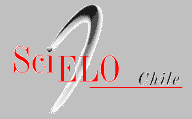Techniques of massive data capture: A comparative approach for the assessment of complex spaces in architectural heritage
Keywords:
Terrestrial Laser Scanner, Close Range Photogrammetry, heritage, Cathedral of TortosaAbstract
Planimetric documentation is a fundamental tool for the conservation of architectonic heritage. New survey techniques that are based on the massive capture of data achieve noticeable reductions in time and resources. This article discusses the implementation of these survey techniques in a complex interior space: the apse of the Tortosa Cathedral (1374-1441). The aim of this investigation was to evaluate the Terrestrial Laser Scanner (TLS) and Close Range Photogrammetry (CRP) techniques for optimizing the workflow of a complete survey of the Cathedral. This broad perspective comparison considers various factors such as precision and the used resources. This will allow the best data capture technique for each situation to be suitably established.
Downloads
Downloads
Published
How to Cite
Issue
Section
License

This work is licensed under a Creative Commons Attribution-NonCommercial-NoDerivatives 4.0 International License.







